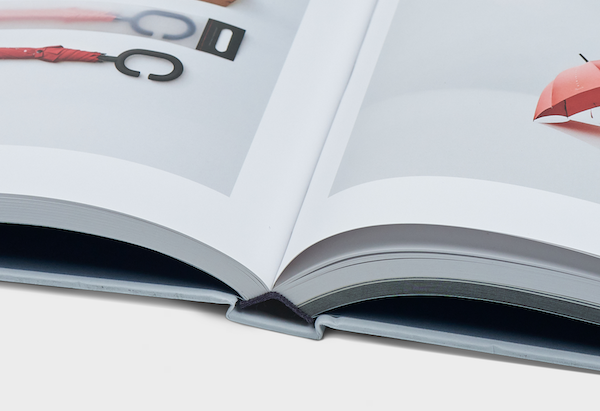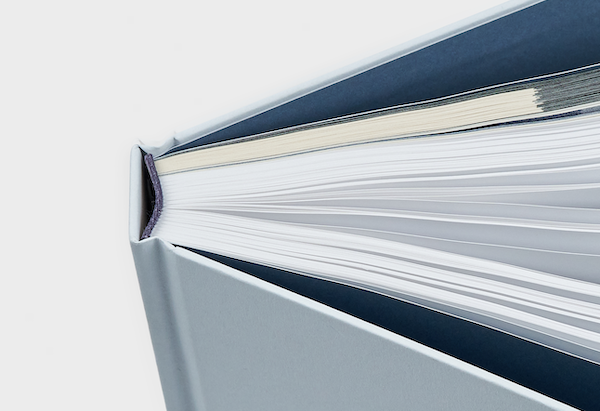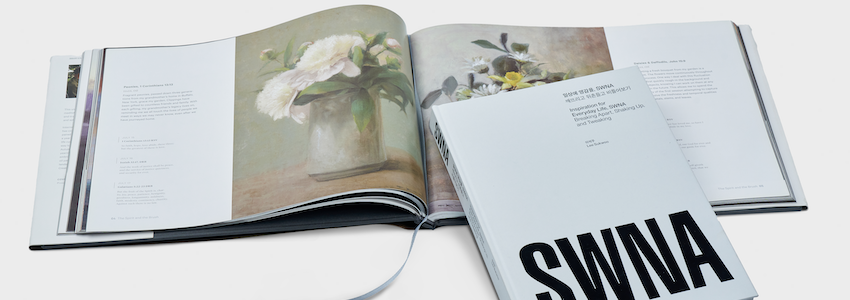Designing the layout for a hardcover book’s coverwrap and dust jacket is a common challenge for many designers. Despite searching online, it can be difficult to find clear answers, especially when considering the varying book sizes and spine thicknesses. Even though there are two types of spines—round and squared—the layout for each is not always explained in detail.
At inclpress, we aim to offer a clear and precise guide to help navigate these design choices, complete with terminology for each part of the book.
Key Assumptions for Our Guide:
- All measurements will be in millimeters (mm).
- The book size will be represented by a width of A mm and a height of B mm. The shape can either be portrait or landscape.
Coverwrap Design Layout
The coverwrap, which wraps the hardcover boards, must take into account the area where the endsheet folds over and covers part of the interior. Since the thickness of the boards is involved, the wrap will not fold entirely flat but will curve around the boards. This curvature must be factored into your design.
The layout of the coverwrap will also differ based on whether the book has a round or squared spine. It’s essential to understand how the curvature of the spine influences the overall design.

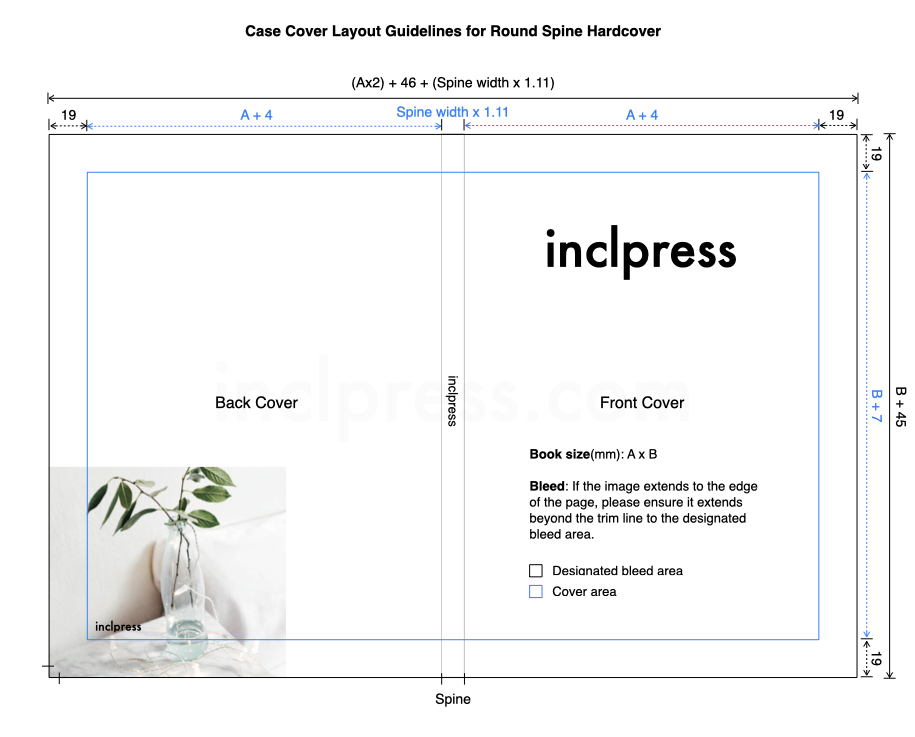
Dust Jacket Design Layout
The dust jacket wraps around the exterior of the coverwrap, and its flaps tuck inside the book. The size of these flaps can vary, but it’s important to avoid making them too large, as this could make it difficult to insert the jacket smoothly. If the jacket is inserted incorrectly or at an angle, it could stick out, which will diminish the book’s professional appearance.
When designing, consider both the outer cover and flap areas within the layout guide to ensure proper alignment and fitting.
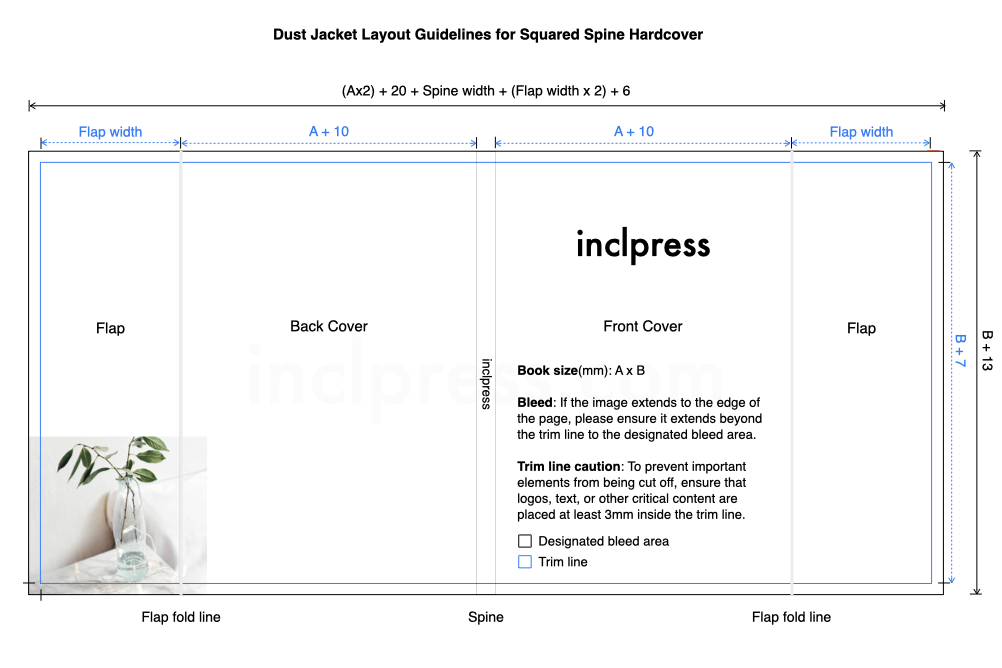
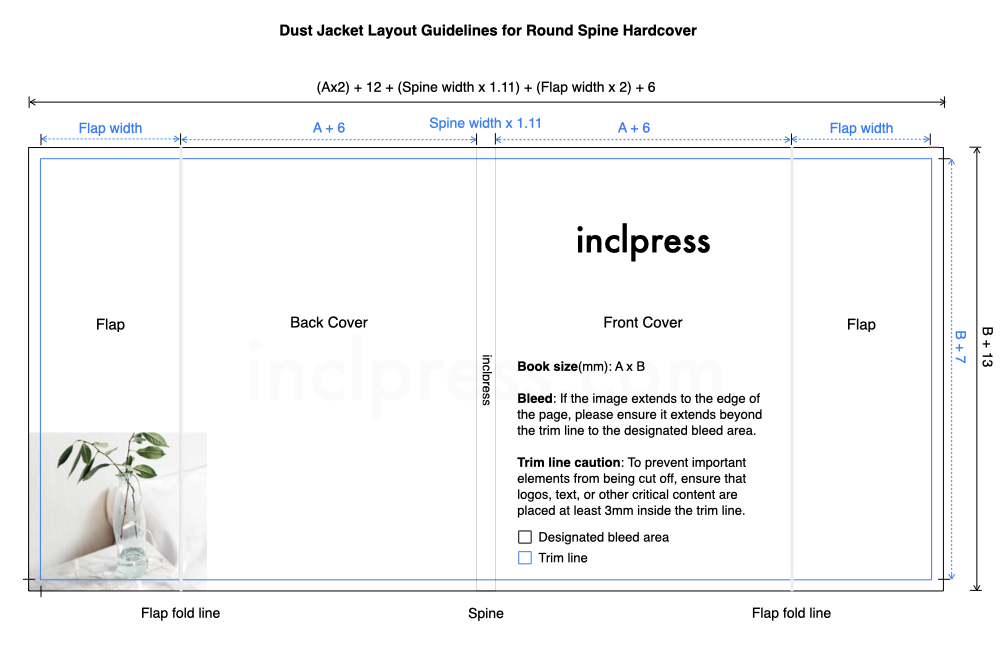
Additional Resources: Full Layout Guide
For detailed guidelines on the entire layout, including the endsheet and binding, you can download the full specifications from the File Requirements section at inclpress.com.
How to Assess Hardcover Quality
The quality of a hardcover book’s binding is most evident when examining the spine. A well-bound book will have a spine that remains firm and consistent when opened, without warping or distortion. High-quality books maintain this stability even with frequent handling.Additionally, make sure the endsheet is correctly attached to the coverboard without any misalignment. Since hardcover books often involve manual labor in the binding process, the quality can vary greatly between manufacturers.
